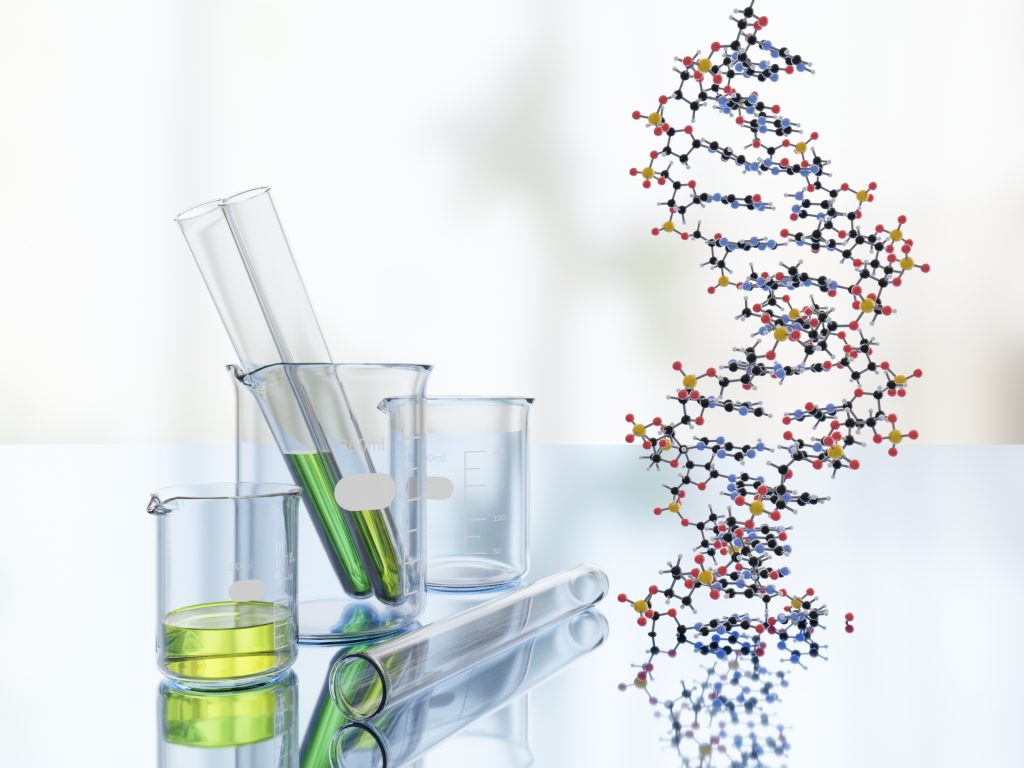
この記事の概要
DNA鑑定は、異父・異母兄弟関係を正確に確認する方法です。遺産相続や移民申請、家族関係の明確化、医療目的で活用され、DNAマーカーを解析して血縁関係を高精度で判断します。心理的安心や法的証拠としても役立ちますが、プライバシーや心理的影響への配慮も必要です。
DNA testing is widely used not only to confirm parent-child relationships, but also to confirm blood ties between siblings. In particular, testing to clarify the relationship between half-siblings plays an important role in inheritance issues and legal procedures. This article provides a detailed explanation of the methods, accuracy, and use cases of DNA testing for half-siblings.
How to test DNA for half-siblings and paternal siblings
1. Half-sibling test
Half-siblings are siblings who have the same mother but different father. DNA testing for half-siblings confirms the blood relationship between siblings based on genetic information inherited from a common mother.
- How it works: The DNA of siblings is compared to determine the degree of similarity of genetic markers inherited from a common mother。alfs-inc.com
- Additional testing for improved accuracy: If necessary, mitochondrial DNA (mtDNA) testing can be used to analyze maternal genetic information in detail and improve the accuracy of the identification。alfs-inc.com
2. Half-sibling test
Half-siblings are siblings who have the same father but different mothers. DNA testing for half-siblings confirms the blood relationship between siblings based on genetic information inherited from a common father.
- Testing method: The Y-chromosome short repeat (Y-STR) sequences between siblings are analyzed to evaluate the degree of identity of genetic markers inherited from a common father。alfs-inc.com+1エムシー法律事務所+1
- Additional testing to improve accuracy: If necessary, the DNA of the mother of the sibling can be provided to improve the accuracy of the test.
Accuracy of DNA testing and influencing factors
The accuracy of DNA testing depends largely on the quality and number of samples provided and the testing methodology used.
- Sample quality and quantity: Multiple, high-quality DNA samples provide a more reliable test. alfs-inc.com
- Selection of testing method: In addition to standard STR testing, Y-STR testing and mtDNA testing can be used in combination to improve the accuracy of the identification。alfs-inc.com
For example, the Forensic Science Laboratory has achieved highly accurate sibling identification by combining the STR method and Y-STR typing。 alfs-inc.com
Examples of DNA testing

DNA testing is used in the following situations:
- Inheritance issues: When legal blood ties need to be confirmed for inheritance。alfs-inc.com
- Family register correction: Correction procedures when there is a discrepancy between the description in the family register and the actual blood relationship。alfs-inc.com
- Custody disputes: Proving relatedness in legal proceedings involving child custody.
In these cases, DNA testing serves as objective evidence and helps expedite legal proceedings.
DNA testing procedures and precautions
The general steps and precautions to take when requesting a DNA test are as follows:
- Choosing an appraisal agency: It is important to choose a reliable appraisal agency.
- Sample collection: The most common method is to collect cells from inside the mouth using a special swab。alfs-inc.com
- Sample submission: Submit the collected sample to the appraisal agency.
- Results: Results are typically available within a few days to a few weeks.
Please note:
- Privacy protection: It is important to be careful about how personal information is handled and to select a trustworthy appraisal agency.
- Legal validity : If the results are to be used in legal proceedings, the samples must be collected in a legally valid manner。alfs-inc.com
Latest Trends in DNA Testing
In recent years, DNA testing technology has evolved rapidly, making it possible to perform analysis more quickly and with greater accuracy.
- Introduction of next-generation sequencing (NGS) : The introduction of NGS technology, which can analyze large amounts of genetic information in a short period of time, has improved the accuracy and efficiency of identification.
- Utilizing AI technology: Data analysis using artificial intelligence makes it possible to estimate complex blood relationships. alfs-inc.com+1dna.jpn.com+1
- Building an international database: Many countries
Ethical and legal issues regarding DNA testing and half-paternity/half-sibling relationships

As DNA testing becomes more widespread, ethical and legal issues are also becoming apparent. In particular, the issue of identifying half-parent or half-sibling relationships is deeply connected to family relationships and personal privacy.
1. Privacy issues with DNA testing
DNA information is extremely personal and must be handled with care. When conducting a DNA test to verify a half-parent or half-sibling relationship, the consent of the parties is essential.
- Risk of conducting tests without the individual’s consent
- Potential legal issues (violation of privacy rights)
- Potential for unexpected disruption to family relationships
- The risk of companies mismanaging genetic information
To protect privacy, many countries require that consent be obtained from all parties involved when conducting DNA testing.
2. Legal status of DNA testing
Whether or not DNA testing is legally recognized varies by country and region. In particular, if you are using DNA testing to prove a half-parent or half-sibling relationship, you should be aware of the following points.
- Differences between legal and private appraisals
- Legal appraisal: Procedures must be in place to be recognized by courts and public institutions.
- Private appraisal: Used to verify individuals, but has limited legal effect
- Cases where legal opinion is required
- Inheritance issues: When half-siblings claim an inheritance
- Child support claims: Determining legal responsibility when paternity may be different
- Immigration and nationality cases: cases where it is necessary to prove blood ties as siblings
Procedures must be in accordance with the laws of each country, so it is important to consult with an expert in advance.
3. The psychological impact of DNA testing
The facts revealed by DNA testing can have a profound psychological impact on those involved.
- The impact of the revelations
- The psychological shock of finding out that someone you thought was a sibling is not related to you
- Confusion upon learning that you have unknown siblings
- Possible changes in family relationships
When undergoing a DNA test, you need to consider the psychological impact and be prepared to accept the results.
The evolution of DNA testing technology and its future prospects

DNA testing technology is evolving year by year, allowing for more accurate testing. In particular, new technologies are being developed to more accurately determine the relationship between half-fathers and half-siblings.
1. Utilizing Next-Generation Sequencing (NGS)
Next-generation sequencing (NGS) is a technology that can analyze many more genetic markers than traditional STR methods, improving the accuracy of identifying half-sibling relationships.
- Difference from conventional STR method
- STR method: Relies on probabilistic judgments to compare limited markers
- NGS method: Analyzes tens of thousands to millions of pieces of genetic information to determine more precise relationships
The use of NGS has significantly reduced the risk of misidentification when identifying half-siblings.
2. AI-based DNA analysis
DNA analysis using artificial intelligence (AI) is also evolving, making it possible to automate identification and improve its accuracy.
- Key points for using AI
- Rapidly process large amounts of DNA data to derive more accurate results
- Probabilistic evaluation of half-sibling relationships and strengthened statistical support
- Analyzing mutation patterns in genetic information and measuring DNA similarities in more detail
The introduction of AI has improved the reliability of appraisal results and enabled results to be obtained in a shorter period of time.
3. Expansion of gene databases
In recent years, many companies and research institutions have been building genetic databases, creating an environment where they can match more samples.
- Utilizing international databases
- Improving the accuracy of determining sibling relationships
- Enabling identification that takes into account the genetic characteristics of different ethnicities and regions
- A system is in place to anonymize genetic data and use it safely.
The expansion of such databases has dramatically improved the accuracy of DNA testing.
DNA testing costs and procedures
It is also important to understand the costs and procedures involved in undergoing a DNA test.
1. DNA testing costs
The cost of DNA testing varies depending on the type of test, its accuracy, and the testing institution. The general price ranges are as follows:
- Sibling test (private test): 50,000 to 100,000 yen
- Legal DNA testing: 100,000 to 200,000 yen (requires procedures at a public institution)
- Authentication using next-generation sequencing: Over 200,000 yen
Costs vary depending on the accuracy and content of the test, so it is important to compare and consider in advance.
2. Appraisal process
The DNA test is carried out in the following steps:
- Apply for a test: Apply online or by phone
- Sample collection: Collect oral mucosa and blood
- DNA analysis: Testing using specified methods
- Results: Results are usually announced within 1-3 weeks
In the case of legal testing, the process may take time as samples may need to be taken at a medical institution and witnesses may be required.
DNA testing and its impact on society

The widespread use of DNA testing is bringing about changes in the concept of family and the way society functions.
- Making family relationships transparent: By clarifying blood relationships, it becomes easier to legally sort out issues such as inheritance and custody.
- Reaffirming identity: Knowing your genetic roots can change your self-perception
- Risk of misuse of genetic information: There is a possibility that personal DNA information may be misused, increasing the importance of data protection
DNA testing is a useful tool, but it must be used with care and caution.
Differences in international regulations and laws regarding DNA testing
The use of DNA testing has different laws and regulations depending on the country or region. In particular, when proving blood ties between half-fathers or half-siblings, legally valid testing procedures must be taken. Here we explain the differences in the laws and regulations regarding DNA testing in major countries.
1. Legal status of DNA testing in Japan
In Japan, DNA testing is recognized as legal evidence, but there are differences between private DNA testing and official DNA testing in court.
- Private DNA testing
- Can be done at individual discretion
- Used to confirm inheritance and parent-child relationships
- Limited legal effect (not necessarily admissible as evidence in court)
- Legal DNA Testing
- Carried out under the orders of the Family Court
- Strict procedures are required (such as sample collection at public institutions)
- Can be used as important evidence in court cases to confirm parent-child relationships or in inheritance disputes
2. Regulation of DNA testing in the United States
DNA testing is widely used in the United States and is considered powerful evidence, especially in paternity and criminal investigations.
- Legal DNA Testing
- If used as evidence in court, the test must be performed at a laboratory accredited by the American Association of Blood Banks (AABB).
- Used for procedures such as inheritance, immigration, and child support claims
- Private DNA testing
- Provided as a direct-to-consumer (DTC)
- Companies such as AncestryDNA and 23andMe offer genetic testing.
- Privacy issues are being discussed
3. DNA testing in Europe
DNA testing is highly regulated in Europe, with strict rules being applied, particularly with regard to privacy protection.
- Relationship with GDPR (General Data Protection Regulation)
- Genetic information is considered a “special category of personal data” and there are strict restrictions on how it can be handled.
- It is illegal to obtain and use DNA information without explicit consent
- National differences
DNA testing and its psychological and social impacts

Revealing blood relationships through DNA testing has significant psychological and social impacts on those involved.
1. Change in identity
DNA testing can affect people’s identity if it reveals that their family relationships are different from what they assumed.
- The psychological impact of finding out you are not biological siblings
- Questioning family ties
- Worrying about one’s roots
- Family relationships need to be rebuilt
- The impact of having half-siblings you didn’t know about
- New family relationships will need to be built
- Possibility of legal issues (inheritance and support obligations) arising
2. Ethical issues surrounding DNA testing
While DNA testing is scientifically accurate, it also raises many ethical issues.
- Problems with conducting DNA testing without permission
- Without the consent of the person involved, it would be a violation of privacy.
- Possibility of the test results negatively affecting family relationships
- Ethical Issues Regarding DNA Testing of Children
- Should children be allowed to take DNA tests without their parents’ consent?
- How will it affect your child’s future?
The future of DNA testing and technological innovation
DNA testing technology is developing rapidly and is expected to continue to evolve in the future. In particular, the introduction of AI and cloud technology is expected to enable faster and more accurate testing.
1. DNA analysis using AI and machine learning
Advances in AI are making the DNA analysis process much more efficient, making it possible to provide results in a shorter time.
- The impact of AI on DNA testing
- Analyzing large amounts of data reduces the risk of false positives
- More accurate calculation of sibling probability
- The development of cloud-based DNA analysis services
2. Genetic information management using blockchain technology
Blockchain technology is being increasingly adopted for the secure management of DNA testing data.
- Benefits of Blockchain
- Preventing DNA data tampering
- Personal genetic information can be stored securely and disclosed only when necessary
- Improving the reliability of legal DNA testing
3. Combining gene therapy and DNA testing
In the future, DNA testing technology may be linked to gene therapy and be applied to early detection of diseases and personalized medicine.
- The integration of DNA testing and personalized medicine
- Sibling compatibility checks for organ transplants
- Early diagnosis and prevention of genetic diseases
- DNA-based lifestyle advice
It is believed that such technological innovation will lead to DNA testing being used in a wider range of fields.
Forensic applications of DNA identification and their impact on investigations

DNA testing is widely used not only to confirm half-parental or half-sibling relationships, but also in the fields of forensic medicine and criminal investigation. In particular, investigative techniques that use DNA information from relatives are helping to solve unsolved cases and identify missing people.
1. DNA search for relatives and criminal investigations
In recent years, a technology called “Familial DNA Search” has come to be used in criminal investigations. This is a method of comparing DNA collected at a crime scene with existing DNA databases to identify close relatives who have partial, but not perfect, genetic matches.
- Use Cases
- In the United States, this technology was used to identify the suspect in the 2003 Golden State Killer case.
- A project is underway in the UK to use DNA tracing to solve unsolved crimes from the past.
This technology makes it possible to identify criminals based on their family DNA information, even if they are not registered in a database.
- Assignment
- Genetic privacy issues
- Legal discussion regarding the scope of use of DNA databases
- Risk of false arrest
2. Identification of unidentified bodies
DNA testing has also played a major role in identifying unidentified bodies. In particular, DNA analysis of half-sibling relationships has led to an increasing number of cases where missing persons have been found.
- The Identification Process
- Extracting DNA from the remains
- Matching with public DNA databases
- Compare DNA from close relatives to infer blood ties
- If there is a match, the identity is identified
- Success stories
- Remains of missing World War II soldiers identified by family’s DNA
- Victim’s identity revealed through DNA matching in case unsolved for over 30 years
Technical challenges and the risk of misdiagnosis in DNA testing
DNA testing is an extremely highly accurate technology, but there is still a risk of misidentification. In particular, there are some technical challenges when proving a half-parent or half-sibling relationship.
1. Sample Deterioration and Contamination
DNA samples may deteriorate depending on the storage environment. Also, if they are mixed with other DNA when collected, false positives may occur.
- Main issues
- Degraded DNA makes accurate analysis difficult
- False positives due to cross-contamination (e.g., DNA from different people in the same location)
- Data distortion due to PCR amplification errors
To prevent this problem, strict sample management and advanced analytical techniques are required.
2. Mosaicism
“Mosaicism” refers to the phenomenon in which cells with different DNA profiles exist within the same individual. This can affect DNA testing of half-parents or half-siblings.
- Examples of impacts
- When one sibling has mosaicism, conventional DNA testing can give unexpected results.
- In cases where the DNA in germline and somatic cells differ, this can affect parent-child relationships.
To address this issue, it is important to combine multiple DNA analysis methods.
3. Risk of false positives and false negatives
In DNA testing, there is a risk of statistically incorrect results (false positives and false negatives).
- False Positive
- Cases where people are mistakenly determined to be siblings when in fact they are not related by blood
- Chance matches between unrelated individuals with similar genetic characteristics
- False Negative
- Cases where DNA testing denies a blood relationship despite the fact that there is a blood relationship
- Affected by sample deterioration and deletion of specific gene regions
To minimize this risk, a combination of testing methods is recommended.
Commercial use of DNA testing and ethical issues

In recent years, DNA testing has become widely available as a service for the general public, but its widespread use also brings with it ethical issues.
1. Commercial use of genetic data
Companies like AncestryDNA and 23andMe offer consumer DNA testing services to analyze individuals’ genetic roots and health risks, but concerns have been raised about how these companies use the DNA data they collect.
- Issues
- Possibility of DNA data being sold to third parties (insurance companies, pharmaceutical companies)
- Monitoring by national agencies and registration in databases
- Risk of personal information leakage
To prevent such problems, strict regulations on the handling of DNA data are needed.
2. Potential for genetic discrimination
There are concerns that DNA test results may affect insurance and employment opportunities.
- Specific issues
- If you are genetically determined to be at higher risk for certain diseases, your premiums may increase.
- “Genetic discrimination” – being denied employment due to genetic factors
To address this issue, the United States enacted the Genetic Information Nondiscrimination Act (GINA), which prohibits discrimination on the basis of genetic information.
The future of DNA testing: More precise analysis

DNA testing technology is evolving every day, and it is predicted that even more accurate analysis will become possible in the future.
1. Single-cell analysis
Conventional DNA analysis mainly involves analyzing multiple cells at once, but advances in single-cell analysis technology have made it possible to analyze the DNA profile of each individual cell.
- Application Areas
- Early cancer detection
- More detailed analysis of gene mutations
- Improving the accuracy of identification of half-fathers and half-siblings
2. Nanopore sequencing
DNA sequencing using nanopore technology enables real-time genetic analysis, enabling identification faster and at lower cost than conventional methods.
Summary
DNA testing is used for a wide range of purposes, including confirming half-parent relationships, legal procedures, criminal investigations, and the medical field. Advances in technology have improved the accuracy of analysis using next-generation sequencing and AI, making it possible to perform fast and accurate testing. On the other hand, ethical and legal issues such as privacy protection and the risk of misuse of genetic information have been pointed out, calling for appropriate regulation and careful handling. DNA testing is expected to continue to evolve and be used in a variety of fields.


